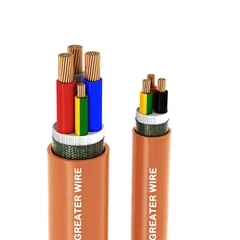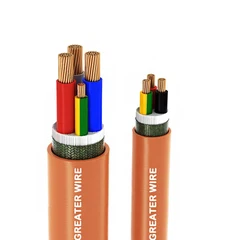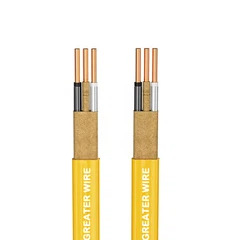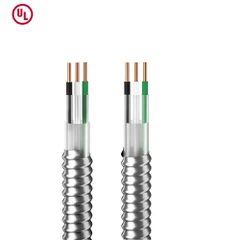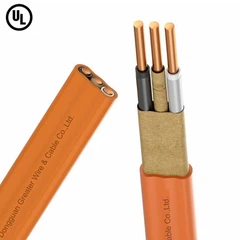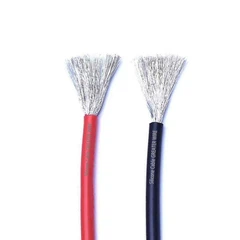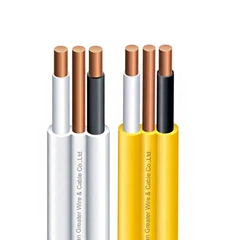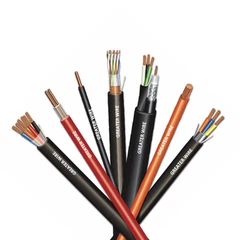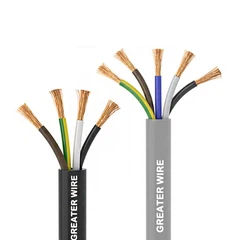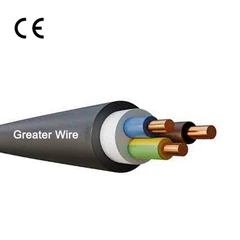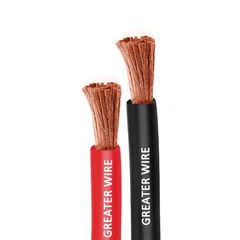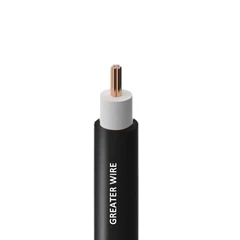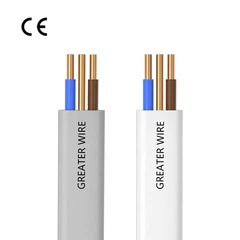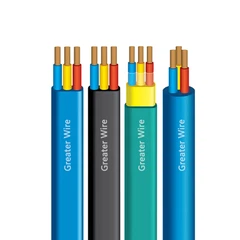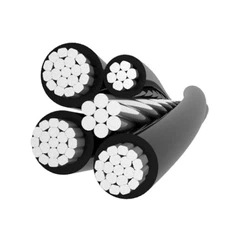1, What is 6mm solar cable?
6mm solar cable refers to a photovoltaic special cable with a conductor cross-sectional area of 6 square millimeters. Common models include PV1-F cable, H1Z2Z2-K cable (EN 50618 standard) and USE-2 PV cable (compliant with UL4703 standard), which have good properties such as UV resistance, high temperature resistance, oil resistance, and aging resistance, and are suitable for wiring photovoltaic power plants in harsh outdoor environments.
| Item | Parameter Description |
| conductor material | Multi strand fine twisted copper wire (tinned copper or bare copper) |
| Insulation material | Cross linked polyolefin (XLPE) |
| rated voltage | DC 1500V , AC 600V-1000V |
| Working temperature range | -40 ℃~+90 ℃ (short-term up to 120 ℃) |
| Installation environment | Ground, roof, overhead, metal bridge, etc |
| Compliant with standards | EN 50618, T Ü V, UL 4703, IEC 62930, etc |
2, What is the current carrying range of a 6mm ² solar cable?
The current carrying capacity of 6mm ² photovoltaic wires is not a fixed value, and its size depends on the following main factors:
Installation method (air laying/buried laying)
Cable temperature
grade ambient temperature
Cable material (copper/aluminum)
Quantity of laying and whether it is bundled
Table 1: Reference current carrying capacity of 6mm ² solar cable under different laying conditions (unit: A)
| Laying method | ambient temperature | Conductor Type | Temperature rating | Reference range for current carrying capacity |
| Air laying | 30℃ | Tinned Copper | 90℃ | 50A ~ 60A |
| Air laying | 40℃ | Tinned Copper | 90℃
|
47A ~ 55A |
| Buried laying | 30℃ | Tinned Copper | 90℃
|
44A ~ 52A |
| Air laying | 60℃ | Tinned Copper | 90℃
|
40A ~ 48A |
| Air laying | 30℃ | Pure Copper | 75℃
|
45A ~ 50A |
3, Calculation formula and example of cable current carrying capacity
Although reference values are provided in the standard, they still need to be calculated in conjunction with formulas in practical engineering. The approximate empirical formula is as follows:
Current carrying capacity (A) ≈ conductor cross-sectional area (mm ²) × K value
Among them, K value is the empirical coefficient, and when copper conductors are laid in air, K ≈ 9-10.
Example calculation:
Assuming a 6mm ² solar cable is made of copper conductor and laid in air at an ambient temperature of 30 ℃
| Current carrying capacity ≈ 6 × 9.5=57A |
Considering the safety factor, it is recommended to use a current of around 50A to avoid long-term full load heating of the cable.
4, Detailed explanation of factors affecting the current carrying capacity of 6mm ² solar cables
| influence factor | Description and Explanation |
| conductor material | Copper has better conductivity than aluminum, and copper wires with the same cross-sectional area can carry larger currents |
| Laying method | The heat dissipation of air laid is better than that of buried or restrained laying, which is conducive to improving the current carrying capacity |
| ambient temperature | The higher the temperature, the faster the insulation aging, and it is necessary to reduce the current carrying capacity |
| Bundle laying | Multiple cables placed together will generate heat, and the current carrying capacity needs to be reduced |
| Temperature rating | XLPE and other high-temperature insulation materials allow for higher operating temperatures, thereby improving the cable's current carrying capacity |
| Laying environment | A well ventilated, light shielded, and waterproof environment is more conducive to cable heat dissipation and stable operation |
5, Regulations on current carrying capacity of 6mm ² solar wire in domestic and foreign standards
IEC International Standards (IEC 60364 series)
The current carrying capacity provided by IEC standards is relatively conservative, emphasizing safety redundancy. The standard current carrying capacity of 6mm ² copper conductor solar cable laid in air at 30 ℃ is 46A~55A.
North American NEC Standard (NFPA 70)
According to NEC standard 310.16 table, the current carrying capacity of solar cable copper wire is 55A (single core bare laying) in an air environment of 30 ℃.
European EN 50618 standard
Specifically for PV1-F cable, the standard recommends a current carrying capacity of around 50A (6mm ² copper wire) under long-term operation at 90 ℃.
6, Suggestions for selecting solar cables in practical applications
When designing solar power wiring, the following points should be considered:
1. Selection based on maximum operating current: It is recommended that the current carrying capacity of solar cables be greater than 125% of the maximum current of the circuit.
2. Consider voltage drop: In long-distance installation, the resistance of 6mm ² solar cable cannot be ignored, and the voltage drop should be controlled within 3%.
3. Margin design: Considering future system expansion and temperature fluctuations, reserve 10% to 15% margin.
4. Choose certified photovoltaic wire products, such as T Ü V and UL certified cables, to ensure quality and compliance.
7, Comparison Table of Carrying Current of 6mm ² Solar Cable (Comprehensive of Multiple Standards)
| Item | Numeric Range | Remark |
| Recommended current carrying capacity (general conditions | 50A ~ 55A | 30 ℃ ambient temperature, air laying |
| Maximum current carrying capacity (extreme case) | 60A | High temperature insulation material, good ventilation environment |
| Suggested current carrying capacity after bundle laying and derating | 40A ~ 45A | When laying more than or equal to 3 pieces together, the capacity should be reduced for use |
| NEC standard current carrying capacity (90 ℃ copper conductor) | 55A | Refer to NEC 310.16 table |
| Recommended current carrying capacity of EN 50618 standard | 50A | Typical PV1-F cable |
| IEC 60364 recommends current carrying capacity range | 46A ~ 52A | Conservative calculation, applicable to European engineering projects |
| Voltage level | 1500V | PV cable standard configuration |
| Conductor structure | Multi strand fine twisted copper wire | Flexible, suitable for outdoor and equipment wiring |
The safe current carrying capacity of 6mm ² solar cables under standard conditions is usually between 50A and 55A. The specific value needs to be comprehensively judged based on the installation method, environmental temperature, cable structure, etc. When designing cable current carrying capacity, national or international standards should be followed, and margin design should be adopted to ensure long-term safe operation of the system.
For the connection between common photovoltaic inverters and combiner boxes, 6mm cables can already meet most single circuit requirements. If the line is long or the current is higher, it is recommended to upgrade to a 10mm ² or 16mm ² cable to reduce voltage loss and heat risk.
Greater Wire company has 30 years of experience in producing photovoltaic cables, and its products have passed TUV certification and UL4703 certification. If you want to learn more about solar energy, please contact us


